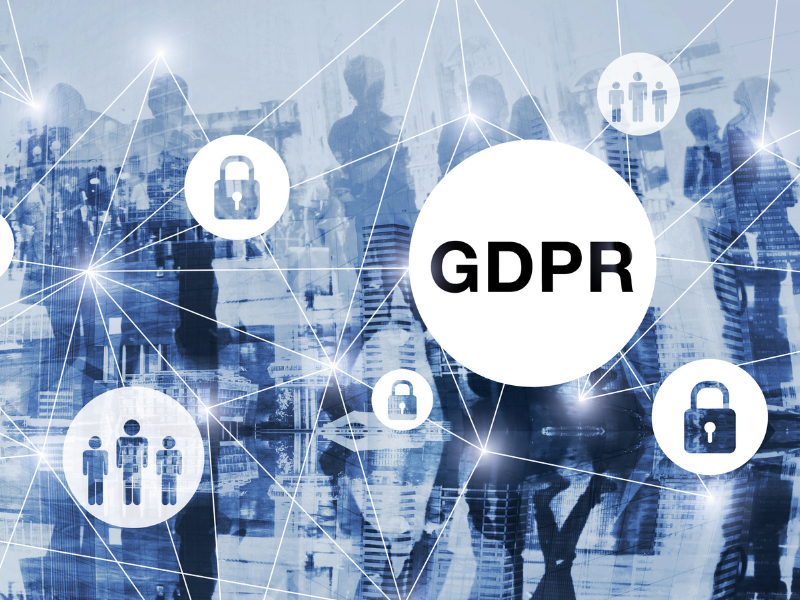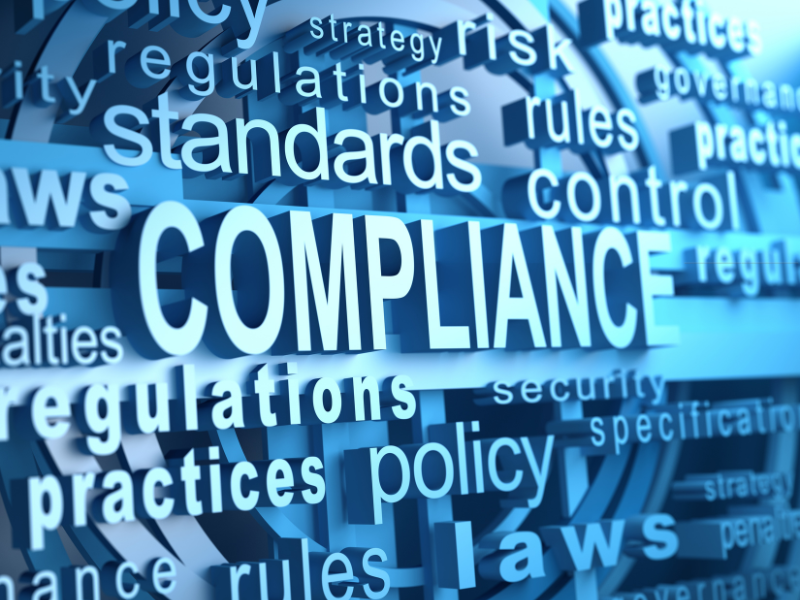Security compliance refers to the processes and policies we put in place to meet specific security standards set by laws, regulations, or industry best practices. In essence, it’s the assurance that we’re protecting sensitive data in a way that aligns with legal and ethical expectations. Whether we’re talking about healthcare, finance, retail, or tech, every sector has its own set of rules designed to keep information safe, such as protecting customer credit card details or ensuring patient privacy.
Key Takeaways
- Security compliance is a continuous process that involves meeting evolving standards to protect sensitive data and build organizational trust.
- Understanding major regulations like GDPR, HIPAA, and PCI DSS is essential for effective security compliance management.
- Common challenges in security compliance include adapting to constant change, limited resources, and integrating controls seamlessly into daily business operations.
- Best practices for achieving security compliance include conducting regular risk assessments, comprehensive employee training, and leveraging automation technologies.
- Using advanced technology solutions, such as SIEM systems and cloud compliance platforms, streamlines compliance efforts and improves real-time risk management.
Achieving security compliance is not a once-and-done event: it’s a continuous effort. We must consistently assess our controls, adapt to new threats, and document our compliance status for internal stakeholders, auditors, and sometimes regulators. It’s not just about avoiding penalties, it’s about building trust with our partners, clients, and customers.
Private Identity plays a significant role here by providing secure, privacy-preserving authentication solutions. Its on-device biometric verification ensures that identity management and authentication processes are compliant with data protection regulations like GDPR while maintaining high levels of security.

Key Regulations and Frameworks
Navigating the maze of security compliance starts with understanding the major players, the regulations and frameworks that shape how we approach data protection:
- General Data Protection Regulation (GDPR): Governs the protection of personal data for EU residents, requiring strict controls and transparency.
- Health Insurance Portability and Accountability Act (HIPAA): Mandates security and privacy for healthcare information in the U.S.
- Payment Card Industry Data Security Standard (PCI DSS): Sets requirements for organizations that handle credit card data.
- Federal Information Security Modernization Act (FISMA): Directs federal agencies and their partners on information security requirements.
- ISO/IEC 27001: An internationally recognized standard for information security management systems.
- NIST Cybersecurity Framework: Offers best practices for managing cybersecurity risks in any organization.
Each regulation or framework addresses different aspects of security, but they all aim for the same goal: safeguarding sensitive data. The challenge is mapping which requirements apply to our organization and ensuring we remain compliant as these standards evolve.
Solutions like Private Identity’s privacy-preserving biometric authentication help organizations meet compliance requirements by securing sensitive personal data while ensuring that biometric data is processed on-device, reducing the risks of data exposure.
Common Challenges in Achieving Security Compliance
Security compliance can sometimes feel like walking through a minefield. Here are a few hurdles nearly all organizations face:
Complexity and Constant Change
Regulations are never static. New laws, updated frameworks, and evolving threats require us to regularly reassess our controls and policies. Staying up-to-date (without overwhelming our teams) is its own challenge.
Resource Constraints
Meeting every compliance requirement demands time, money, and specialized knowledge. For many of us, these resources aren’t unlimited, especially when juggling day-to-day operations.
Integration with Business Processes
Embedding compliance into daily workflows can be tricky. If compliance measures disrupt productivity or seem overly restrictive, staff may sidestep controls, sometimes without realizing it.
Proving Compliance
It’s not enough to say we’re compliant: we have to be able to show it. That means gathering evidence, maintaining records, and being audit-ready, sometimes on short notice.
Vendor and Third-Party Risks
We often rely on external vendors, partners, or cloud services, which means our compliance depends partly on their practices as well. If they fall short, we’re still accountable.
Recognizing these common pitfalls is the first step in overcoming them. Private Identity’s solutions help address some of these challenges by offering secure biometric authentication that can be easily integrated into business processes without sacrificing security or usability. This helps organizations comply with regulations, especially those around identity management.
Best Practices for Meeting Security Compliance Requirements
Developing a culture of compliance doesn’t happen by accident. Here’s how we can set ourselves up for success:
Conduct Regular Risk Assessments
By identifying risks early and prioritizing them based on impact, we allocate resources where they matter most. Private Identity helps in this area by providing secure biometric verification that can streamline risk assessments related to identity verification processes.
Carry out Clear Policies and Procedures
Documentation is key, not just for auditors, but also for setting clear expectations for our teams.
Train and Engage Employees
Make compliance tangible for everyone. Regular, practical training reduces mistakes and fosters accountability.
Automate Where Possible
Using automation for monitoring, reporting, or threat detection streamlines compliance without burdening our staff. Private Identity’s solutions integrate well with existing identity management systems, ensuring compliance with minimal manual intervention.
Continuous Monitoring
Proactive monitoring lets us spot issues before they become breaches or major compliance failures.
Strong Incident Response Plans
Having a rehearsed and adaptable response strategy helps us mitigate damage when something goes wrong.
Above all, we should view compliance not as a checkbox, but as an ongoing journey, one that, when done right, strengthens our entire organization.
The Role of Technology in Security Compliance
Technology is our greatest ally in navigating the demands of security compliance. Whether we’re automating complex audit trails, applying encryption to sensitive data, or using advanced identity and access management tools, technology provides the muscle we need to keep up.
Modern compliance solutions offer real-time insights into our environment, automatically flagging policy gaps or suspicious activity. For example, Security Information and Event Management (SIEM) systems gather logs from across the business, helping us respond quickly if something’s amiss. Cloud-based compliance platforms can centralize documentation, reports, and monitoring, making audits far less painful.
The best part? With the right tech, we’re not guessing, we’re making decisions based on actionable data. That means smarter resource allocation, reduced risk of error, and a more resilient compliance program overall. Private Identity supports this effort by offering privacy-preserving biometric authentication that ensures user data is processed securely on-device, in line with compliance requirements like GDPR.
Conclusion
Mastering security compliance is about more than ticking off requirements. It’s a collaborative, ever-evolving effort that touches every corner of our organization. By embracing the latest technology, understanding the landscape of regulations, and building best practices into our culture, we protect our customers, our partners, and our reputation.
The future of security will only grow more complex. But with the right mindset and tools, we can approach our compliance journey with confidence, and transform these obligations into new opportunities for trust and growth.
Frequently Asked Questions About Security Compliance
What is security compliance and why is it important?
Security compliance involves processes and policies to ensure an organization meets security standards set by laws or industry best practices. It’s important because it protects sensitive data, builds trust with clients, and prevents legal or financial penalties.
Which regulations and frameworks are most relevant to security compliance?
Key frameworks include GDPR, HIPAA, PCI DSS, FISMA, ISO/IEC 27001, and the NIST Cybersecurity Framework. Each of these focuses on protecting data and ensuring organizations follow industry-specific security requirements.
How can organizations overcome common security compliance challenges?
Organizations can address challenges by conducting regular risk assessments, creating clear policies, providing employee training, automating processes, continuously monitoring systems, and preparing strong incident response plans.
What role does technology play in achieving security compliance?
Technology aids security compliance by automating audit trails, monitoring for threats, managing identities, and centralizing documentation. Tools like SIEM systems and compliance platforms help organizations efficiently detect risks and maintain compliance.
How often should security compliance be evaluated or updated?
Security compliance should be continuously monitored and reviewed regularly, especially as regulations and threats evolve. Best practices recommend assessing controls periodically and staying informed about changes in relevant laws or security frameworks.
Can small businesses achieve effective security compliance with limited resources?
Yes, small businesses can achieve security compliance by prioritizing risk assessments, leveraging cost-effective automated tools, focusing on employee training, and seeking guidance from industry best practices tailored to their specific needs.
